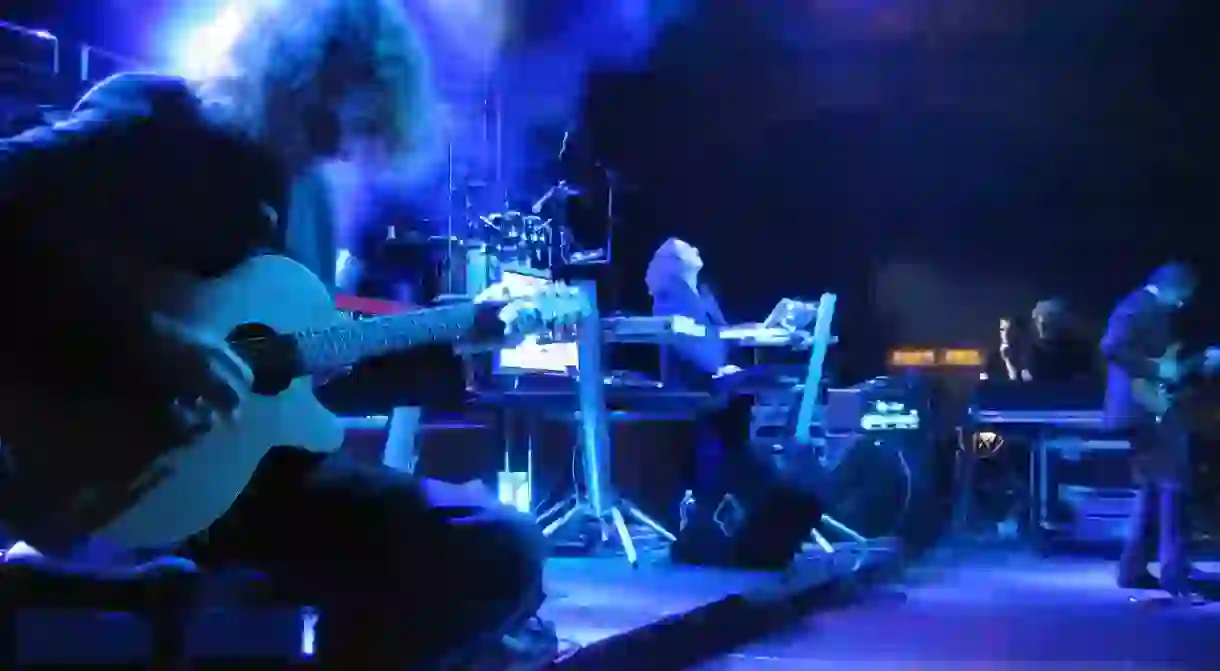7 German Music Genres You've Never Heard of (But Really Should Know)

Germany is responsible for an endless list of famous, underground, avant-garde, electronic, and, of course, techno bands. What many people don’t know are the genres, composers, and musical groups that are responsible for many of the bands we love, have loved, or will love. Take a break from your Spotify playlists and get a dip into some truly hip German genres. There are too many German bands you must know, but to simplify the list, we’re going to break it down by genres, that you may or, may not have ever heard of.
Minnesingers and Meistersingers
If we’re going to get our ears familiar with German music, we better begin from the German beginning, which begins somewhere in the 12th century. These were religious “love poet” hymns that traveled across Germany in German rather than Latin, which had dominated the musical landscape until Minnesingers (Minne was the Middle High German word for love). Minnesingers were more frequently aristocratic, while Meistersingers were middle-class men. This musical genre lasted for two centuries in Germany, imagine that.
Schlager
Fast forward a few centuries, and we arrive in the 1950s, where we find the German pop music genre of Schlager, which specifically came out of West Germany. Schlager music is mostly a positive and sentimental music style. The music emerged in Western German as a reaction against American rock and roll, which was dominating the music scene at the time. Schlager music is usually that sweet kind of romance, so if you’re in a local German bar and you see an old couple romantically dancing to a sweet ’50s tune, it’s probably Schlager.

Krautrock
By the end of the ’60s and the early ’70s, Krautrock dominated the underground music scene in West Germany. This avant-garde style is a fusion of electronic music, at its earliest stages, and psychedelic music. Many of the most famous Krautrock bands are known to have tracks that can go on for 20 minutes or longer. These experimental Krautrock bands also used field recordings and unconventional sounds embedded into their ambient, electronic, and often chaotic recordings.

Neue Deutsche Welle
Next up came Neue Deutsche Welle, which emerged somewhere in the late 1970s. Some believe it grew out of British punk rock, but it is best categorized as New Wave. Neue Deutsche Welle literally translates to “New German Wave.” The genre is heavily electronic, but not too heavy, with typically ironic or comical lyrics (which is where the punk rock influence shines). Nena is an example of a New German Wave artist who many know abroad, but is not the best example of what Neue Deutsche Welle actually was. It was mainly an underground musical movement, and the bands were loyal to their German tongue and refused to go commercial, or adapt to the English-speaking market, and very quickly the genre faded into the background. The bands typically released 80 cassettes of an LP, but luckily we have been able to uncover many of these seemingly lost bands, like Grauzone for example.

Hamburger Schule
Hamburger Schule arose sometime in the ’80s and had a very similar approach to Neue Deutsche Welle. Similarly, Hamburger Schule stayed loyal to the German language and even made it cool again for the German youth to sing and identify with the lyricism of the German language. Of course, with such an approach it can’t help but have been influenced by the punk rock scene. The style is what the German youth, at the time, call “cool pop.”

Ostrock
Contrary to what many may have thought, East Germany was in touch with what was going on on the other side. As you would imagine, Eastern Germans were not as well connected as the Western Germans, and therefore didn’t have access to as many musical machines and instruments. Also, interestingly, their lyrics couldn’t go as far, or as radical, as Western lyrics were free to do. In order to compensate for their restrictions, they were known to use words and lines that were undeniably loaded with multiple meanings and connotations.
Neue Deutsche Härte
Neue Deutsche Härte, which translates to “New German Hardness,” is a highly popularized German style of heavy industrial metal, and when we say heavy, we really mean it. True to their roots, their songs are written and sung in German. Neue Deutsche Härte is a combination of electronic sampling and metal style. Rammstein is one of the most famous bands who is well known internationally. Rammstein has even played in NYC’s Madison Square Garden – it seems the international crowd doesn’t mind what’s lost in translation.














